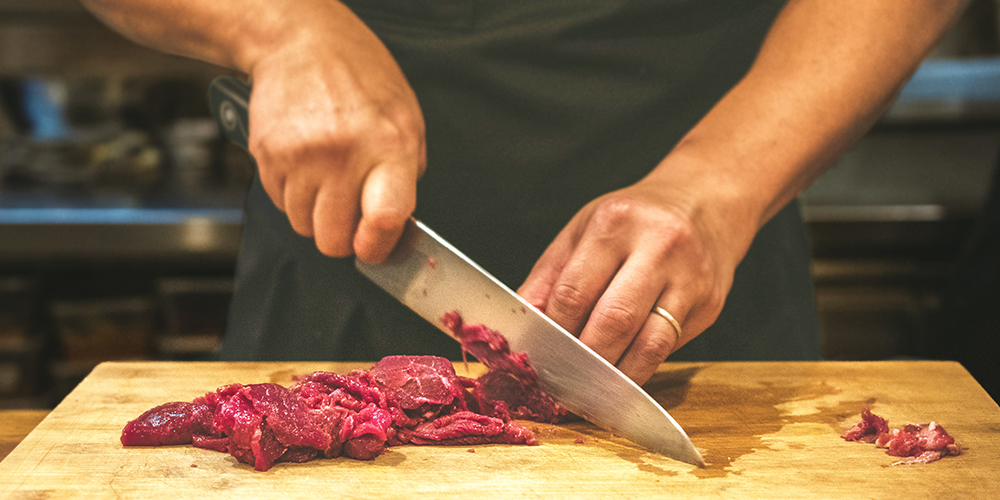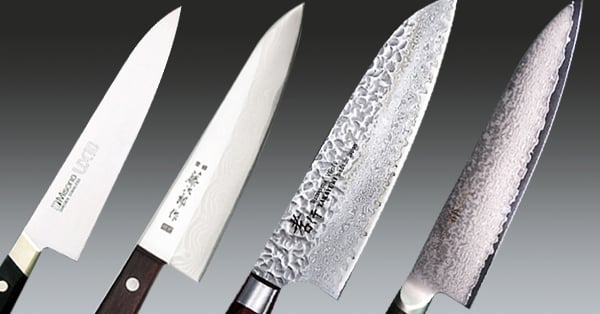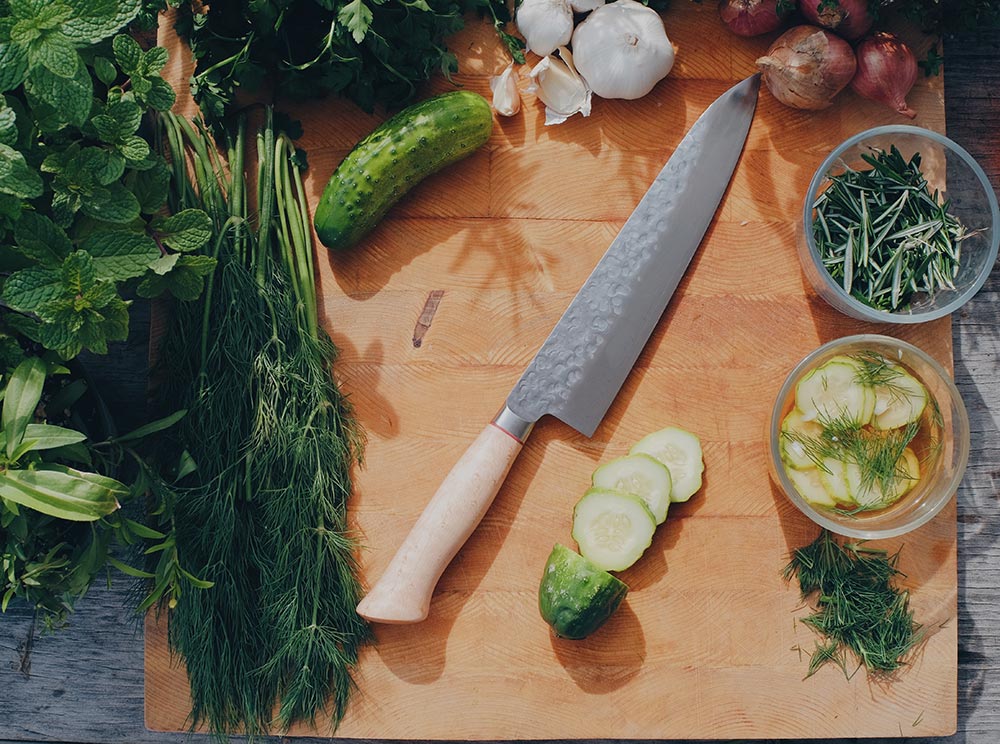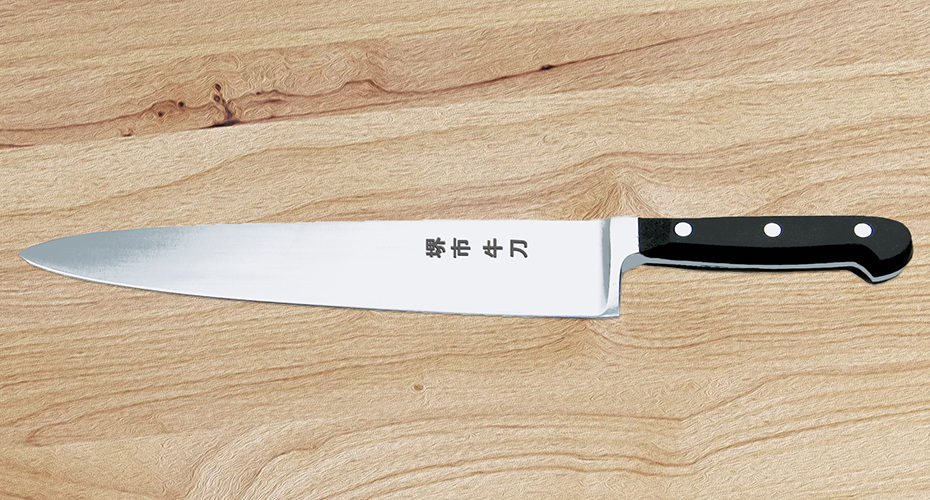Are you looking for a Japanese knife that can do everything in the kitchen? Indeed, the gyuto fits that description.
This post will help you decide if it’s the right kitchen knife for you. You’ll learn about how the gyuto came to be, its shape and size, and how to use it.
And you’ll also learn how the gyuto compares to the other multipurpose Japanese chef knife: the santoku.
Let’s start with this kitchen katana’s origin story.
What is a Gyuto Knife?
A gyuto is the Japanese version of the classic Western chef’s knife. So it has a double bevel blade, unlike traditional Japanese kitchen knives.
It’s likely adapted from French-style kitchen knives. But it may also be of German origin.
Gyuto (牛刀) means “cow sword” in Japanese. Beef wasn’t a big part of the Japanese diet until it opened up to the West. And this was around the time Western kitchen knives arrived. So originally, the gyuto was a knife for cutting meat.
How to Pronounce Gyuto

Want to find your forever knife?
Download my free Japanese kitchen knife finder.
This simple cheat sheet will guide you to the knife type
that best suits your needs.

What is a Gyuto Knife Used For?
Yes, the gyuto is suitable for cutting beef. This sturdy knife can be forcefully pressed onto large chunks of meat, cutting it in one motion. Many other knives cannot do this.
As a chef knife, a gyuto can perform many other tasks too. And it’s also adept with vegetables, fish, and other types of meat.
The gyuto has a flatter blade than the Western chef knife. And this is an adaptation to the Japanese style of push cutting. But this also means it’s not as good at rock chopping.

*As an affiliate advertiser for Hocho Knife, I earn commissions on qualifying purchases.
Gyuto Shape, Size, and Material
The gyuto is a fairly large knife. It’s often flatter than German or French chef knives. But similarly, a gyuto has a sharp tip.
And the gyuto is also a little thinner along the spine than Western chef knives. So it has less lateral strength. So be careful not to torque the blade too much.
Most gyuto range from 180mm (7 inches) to 300mm (12 inches) in length.
As a Western-style knife, gyuto typically comes with a Western handle. But some have an octagonal or D-shape, Japanese-style handle. In this case, it’s called a wa gyuto.
Gyuto is made of both stainless steel and high carbon steel.
In general, stainless steel gyuto are rust-resistant and more durable. But they’re also less sharp and have poorer edge retention.
High carbon steel gyuto are sharper and stay sharp longer. But they require more care.
High carbon is also more prone to chipping and rust.
Santoku vs Gyuto
Both knives are double bevel, versatile, and multi-purpose.
Gyuto and santoku can cut meat, fish, and vegetables. And they’re great for chopping and slicing.
But santoku and gyuto originated for different reasons. As discussed earlier, gyuto was a Japanese take on the European chef knife. And they were originally for cutting meat–especially beef.
Santoku is a uniquely Japanese knife. Before meat was widely introduced (along with the gyuto), Japanese people ate mostly vegetables and seafood. The nakiri vegetable knife was the most popular knife at the time. But it wasn’t great with the new Japanese diet that included meat. So the santoku was developed as a multi-purpose knife.
The santoku tends to have a shorter blade than the gyuto. And the tip is more turned down. On the other hand, the gyuto has a more curved edge and a sharper, pointier tip.
These characteristics mean that the santoku is slightly better with vegetables and vertical chopping. And the gyuto is better with meat and rock chopping.

Gyuto vs Chef Knife
Gyuto is a Japanese version of a European chef knife. They are more or less the same thing. And the terms are often used interchangeably.
Some gyuto have a flatter blade shape, but this varies by manufacturer and product line.
Cleaning a Gyuto
As with any quality knife, hand wash it immediately after use. A mild detergent is ideal.
And as soon as it’s clean, dry your gyuto. This prevents rust from forming. And rust and discoloration can happen even to stainless steel.
How to Store a Gyuto Knife?
Store a clean gyuto should in a cool, dark place. And obviously, it should be dry.
If you’re going to store it for a while, wipe a little knife oil on the blade. Olive oil can be used in a pinch.
Conclusion
Is the gyuto the most versatile Japanese kitchen knife? It’s certainly debatable. If you’re going to have just one kitchen knife, it may be the best.
What do you think? I’d love to hear about your experience with the gyuto.
